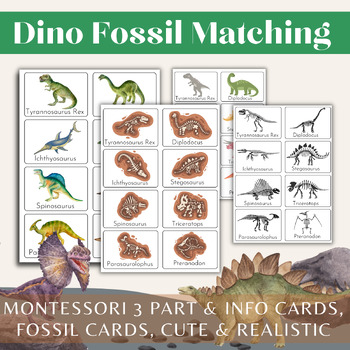Dino Fossil and Skeleton Matching//Montessori 3 Part Cards//Info Cards
- PDF
What educators are saying
Description
Dino and Skeleton Matching // 8 Dinosuars // Montessori 3 Part Cards // Info Cards.
In this unit you will find the following materials:
-8 Dino Cards (realistic and cute versions)
(vocabulary cards and picture only cards with separate labels)
Diplodocus
Stegosaurus
Triceratops
Pteranodon
Ichthyosaurus
Spinosaurus
Parasaurolophus
Tyrannosaurus Rex
-8 Fossil Cards
-8 Skeleton Cards
-8 Info Cards with information about each dinosaur, such as
where and when it lived, body features and diet.
How can you use this unit?
1. Study the picture cards visually
2. Match the picture only cards with the vocabulary labels and vice versa.
3. Match the dino cards with the fossil cards
4. Match the dino cards with the skeleton cards
5. Match the fossil with the sekeleton cards
3. Reading: read the info cards, guess wich dino it is about
Objects of the class: Learn to identify different dinosaurs. Acquire new vocabulary. Practice reading. Learn about different dinosaurs: where and when they lived, their -body features and diet.


